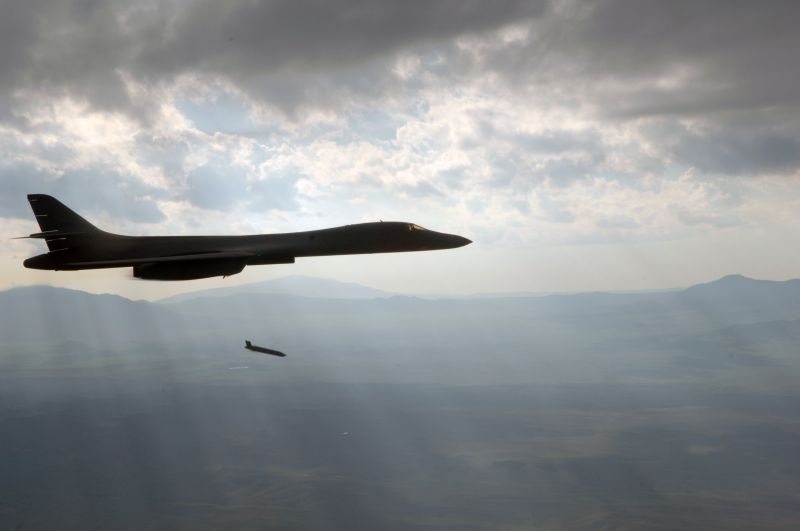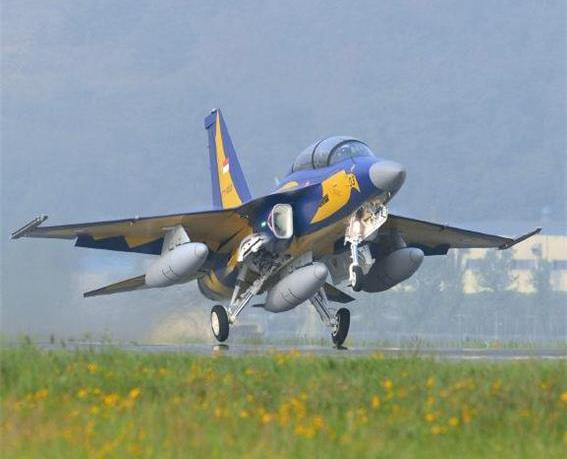A B-1B Lancer successfully struck a waterborne target with a live warhead for the first time Aug. 27.
The 337th Test and Evaluation Squadron completed their first of three scheduled live-fire tests of a Long Range Anti-Ship Missile, or LRASM, on-board a B-1.
The mission sought to evaluate the separation of the missile from the aircraft and monitor the weapon’s flight path to its intended target. Assessment tracked and documented the missile’s in-flight data with an F/A-18 Hornet.
Designed and developed by the Defense Advanced Research Projects Agency and the Office of Naval Research, the LRASM is based off the Joint Air to Surface Standoff Missile-Extended Range, or JASSM-ER, and was constructed as part of an effort to overcome challenges faced by current anti-ship missiles penetrating sophisticated enemy air defense systems.
Armed with a 1,000-pound penetrator and blast-fragmentation warhead, LRASM employs a multi-mode sensor, weapon data link and an enhanced digital anti-jam Global Positioning System to detect and destroy specific targets within a group of ships.
According to 337th TES officials, the anti-ship missile is intended for rapid transition to the Air Force and Navy. Because the LRASM is based on the JASSM-ER airframe, it can be transitioned to the B-1, allowing DARPA to add the new technology and create a usable anti-ship missile.
The test squadron’s current LRASM project officer, Capt. Alicia Datzman commented that they are currently working in parallel with the weapon that may be operational within a few short years.
One unique technological feature specific to the LRASM that DARPA wishes to exploit and integrate into the new JASSM-ER variant, is the missile’s ability to receive target or coordinate updates while in-flight.
“Unlike the JASSMs fire and forget mentality, this new technology gives you the chance to fire and change your mind,” said Maj. Shane Garner, 337th TES. “Because of the standoff feature these weapons possess, they tend to be airborne for some time, and for us to be able to change their coordinates in-flight provides us with a large-range of flexibility.”
At this time, the B-1 is the only aircraft currently testing the anti-ship missile.
Should the LRASM technology be fielded installed in the JASSM-ER missile, the B-1 presents itself as the most likely platform to carry the weapon, as it is currently capable of carrying 24 of the long-range missiles the highest capacity in the Air Force.
“We can not only carry more of this weapon than any other platform, but our versatile speeds that have proven useful in the past decade in Afghanistan will also prove useful in the vast maritime environment,” Datzman said. “With our loitering and refueling capability we can hang out for a while waiting on a specific target set or sprint to where we need to deliver these weapons.”
The overarching concept behind the B-1’s rise in the maritime environment can be attributed to the Department of Defense’s Air-Sea Battle concept, in which long-range bombers serve as a key tenet.
The new concept should guide the four branches of the armed forces as they work together to maintain continued U.S. advantage against the global proliferation of advanced military technologies and anti-access/area denial capabilities.
The 337th TES is scheduled to complete the remainder of their live-fire tests by the end of 2013.











